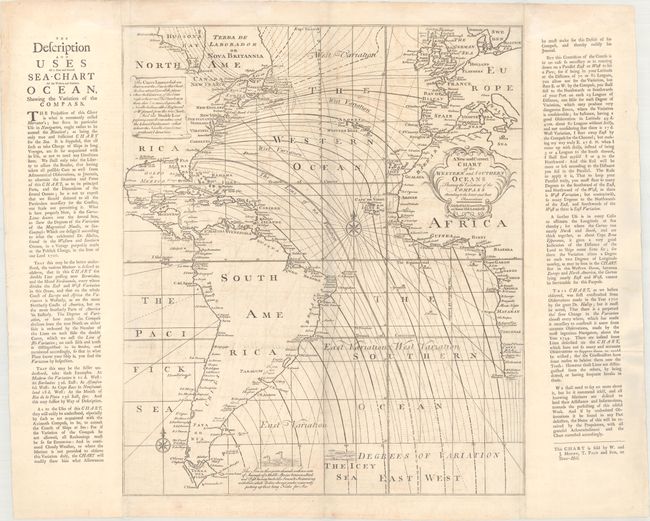Subject: Atlantic Ocean
Period: 1749 (circa)
Publication: The English Pilot, Fourth Book
Color: Black & White
Size:
19.6 x 23 inches
49.8 x 58.4 cm
Edmund Halley (1656-1742) was an English astronomer, meteorologist, and physicist best known for calculating the orbit of the eponymous Halley's Comet. In 1686 Halley became the first to depict trade winds and monsoons on a map, which appeared on his untitled diagrammatic world map. Halley was granted temporary Captainship in the Royal Navy for his scientific voyage through the Atlantic on the ship Paramore, during which he investigated the laws governing the variation of the compass. He published his findings in General Chart of the Variation of the Compass (1701), a chart of the Atlantic ocean which was the first to use isogonic, or Halleyan, lines to show the pattern of magnetic variation. The following year Halley extended his chart to the western Pacific, using data from journals of voyages in the Indian Seas.
This variation of Halley's original chart of the Atlantic Ocean shows magnetic variation of the compass, with a double-line crossing just south of Bermuda indicating the line of no magnetic variation. Place names are focused on the coasts, with the otherwise blank interiors of the continents supporting decorative cartouches. An image of a pair of diving ducks appears near the southern tip of South America along with a note explaining that "animals of a middle species between a bird and fish" can be seen in the seas in the area. A rare and interesting chart.
This edition was re-engraved for the 1749 edition of Mount & Page's English Pilot, omitting Halley's name in the title and removing the route of his voyage through the Atlantic. Additionally, the line of magnetic variation was moved south of Bermuda, and the cartouches were updated. Panels of text flanking the chart were pasted on, as issued, with further information on the chart and its usage. The text does credit Halley with the discovery of magnetic variation, and explains that changes to his original findings were made based on new observations conducted in 1744.
References: Shirley (BL Atlases) M.M&P-5c #1.
Condition: B+
A clean and bright example, issued folding, with light offsetting and a few tiny fold separations that have been archivally repaired.


